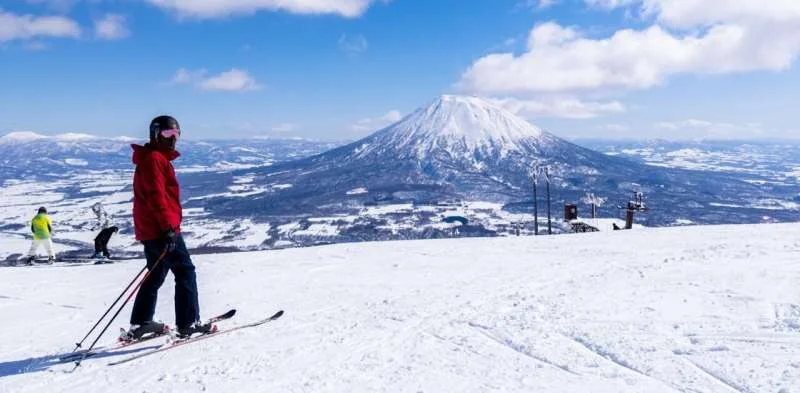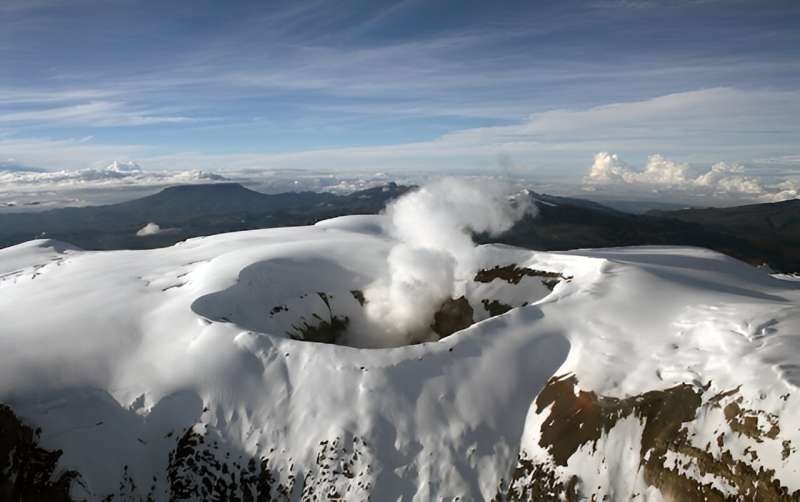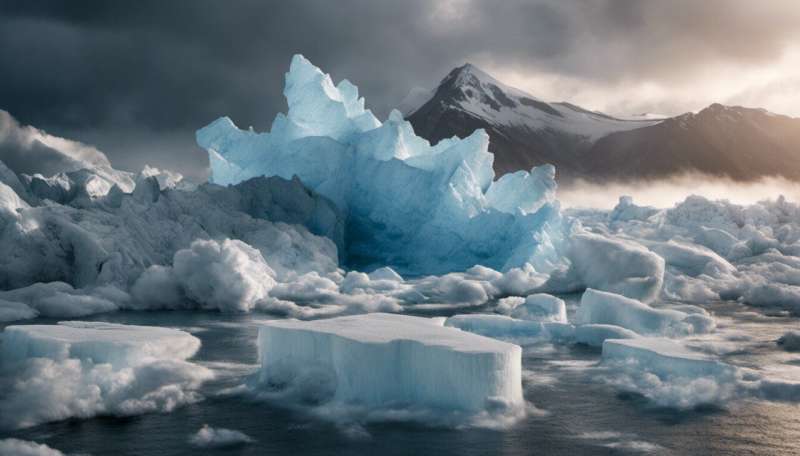Glaciers can tell when a volcano might erupt
- October 3, 2023
- 0
Approximately one volcano erupts every week worldwide. Volcanic eruptions kill an average of 500 people every year and cost the global economy an estimated US$7bn (£5.7bn). Since one
Approximately one volcano erupts every week worldwide. Volcanic eruptions kill an average of 500 people every year and cost the global economy an estimated US$7bn (£5.7bn). Since one

Approximately one volcano erupts every week worldwide. Volcanic eruptions kill an average of 500 people every year and cost the global economy an estimated US$7bn (£5.7bn). Since one in 20 people lives in an area at risk of volcanic activity, any efforts that can be made to improve volcano monitoring are important.
This is especially true for volcanoes covered by glaciers; that is, about 18% of all volcanoes on Earth. When they erupt, the consequences can be one of the worst of all natural disasters.
The Nevado del Ruiz volcano in Colombia killed nearly 25,000 people in 1985; Its eruption caused the ice and snow covering the glacier to melt almost instantly, creating a deadly mixture of water and explosive material (mostly ash and gas) that flowed into the settlement valley. with incredible speed. Glaciers on volcanoes are not only dangerous, they also make it difficult to observe volcanoes from the ground and above using satellites.

Fortunately, a new study found that these glaciers may provide clues to what’s going on in the volcano below. This could help improve monitoring of volcanoes that might erupt in the future.
Previous studies have shown that the temperature of the volcano changes over time and increases before the eruption. In some cases, these changes can be noted several years before visible disturbances begin. It can be observed by satellite, but the signal may be masked by clouds or distorted by ice or snow on the top of the volcano.

Although glaciers are thought to move very slowly, they are quite dynamic. These rivers of ice flow faster or slower depending on what’s going on around them. This is not surprising: Most glaciers around the world are currently shrinking due to rising global temperatures, and many will soon disappear.
But glaciers are also sensitive to other changes. For example, if the temperature of a volcano increases over time, the glacier above it will melt faster and compress to a greater height. We thought this decrease might indicate something was developing in the volcano below, so we used computers to analyze the height of 600 glaciers located on or near (1km to 15km) 37 ice-capped volcanoes in South America. models.
Generally, altitude does not vary much from glacier to glacier in the same climate zone. However, our results showed that in some cases the height of the glacier gradually decreased with distance from the volcano. In other words, glaciers away from the volcano tended to extend further into the mountain valley in which they were located.
The height difference of the glacier moving away from the volcano can reach 600 meters. This is more than we would expect to see with natural variation alone, especially for the relatively small glaciers we studied.
Glaciers located above volcanoes are generally located at higher altitudes (on average 230 meters higher) than those nearby. Most importantly, our study showed that this difference was related to measured volcanic temperatures: volcanoes with higher measured temperatures contained glaciers, especially at higher altitudes.
This is really exciting because it opens the way to using glaciers to improve volcano monitoring. If the height of a glacier at the top of a volcano changes in a short period of time (say, five to ten years) and the rate of change cannot be explained by climate change, this may signal an impending period of volcanic unrest.
Glaciers located on volcanoes serve as ice thermometers in monitoring volcanoes. This understanding could help create early warning systems that could reduce the lethality of ice-covered volcanic eruptions. Source
Source: Port Altele
As an experienced journalist and author, Mary has been reporting on the latest news and trends for over 5 years. With a passion for uncovering the stories behind the headlines, Mary has earned a reputation as a trusted voice in the world of journalism. Her writing style is insightful, engaging and thought-provoking, as she takes a deep dive into the most pressing issues of our time.